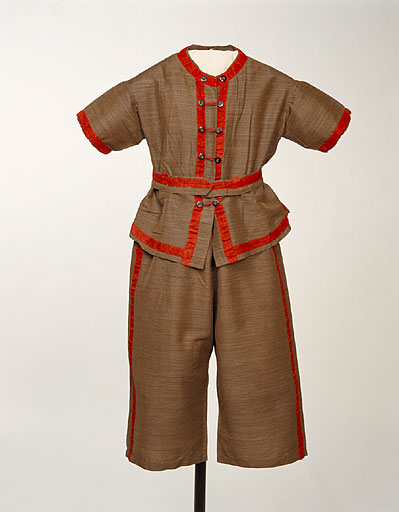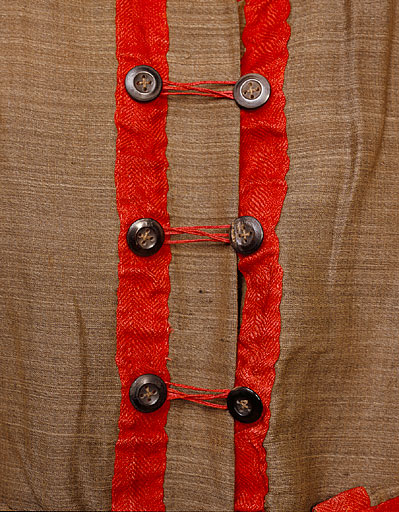bathing costume & swimsuit
Summary
Brown alpaca trimmed with red woollen braid. Fronts to waist each in one section, fastening to round neeck with 6 pairs of bone buttons and narrow red braid loops; back to waist in two sections; short sleeves in one section, join in one sleeve; slightly flared basque, fronts each in one section, back in two sections, concealing waistband; belt attached at centre back, fastening in front with hook and loop; long legs each in one section, seamed at centre back and centre front and at inner leg; neck sleeves, front opening, basque edge and outer leg trimmed with red braid.
Display Label
Men's and women's swimming clothes changed dramatically between 1850 and 1900 as swimming for recreation became increasingly popular. During the eighteenth and early nineteenth centuries medical doctors aimed to cure a wide range of health problems through immersion in (or purging with) invigoratingly cold fresh sea-water, but this did not usually involve actual swimming. Bathing clothes, therefore, did not require much freedom of movement and women's costumes were restrictive, consisting of a tubular, ankle-length woollen dress with neck and arm openings. Women also wore voluminious drawstring bathing caps to protect their hair, rather like large fabric versions of the modern shower cap. After the middle of the nineteenth century, swimming for exercise and enjoyment became an increasingly popular pastime, although men and women were invariably required to bathe separately for most of the nineteenth century. As seen in this print, for modesty, female bathers changed into swimming clothes in bathing machines, or huts on wheels, which could be drawn up to the water's edge for entering the sea.
Object Name
bathing costume & swimsuit
Date Created
1870-1875
Dimensions
Length: 112.5cm
Shoulder to waist: 35.6cm
accession number
1947.2842
Collection Group
Medium
Legal
© Manchester Art Gallery


